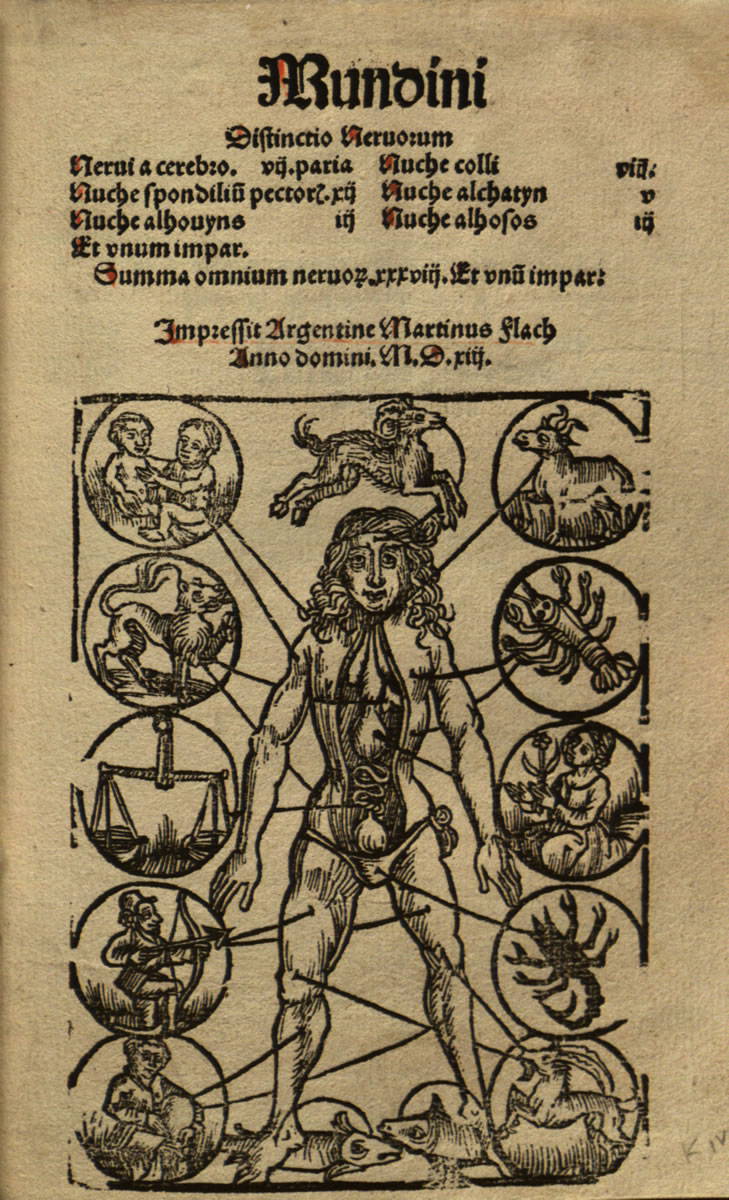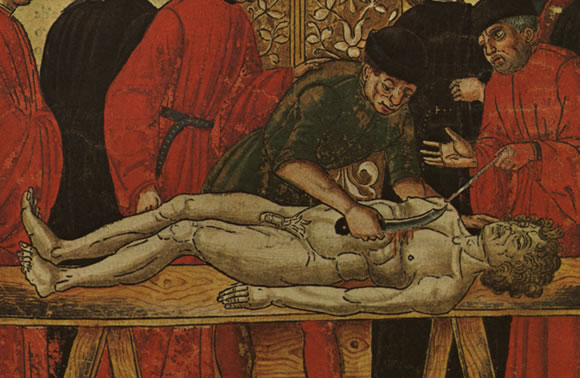Andreas Vesalius: The Early Years
Andreas Vesalius was born in Brussels on December 31, 1514 into a family that had a long association with both medicine and the powerful Hapsburg family. Vesalius’ grandfather Everard served as a court physician to Mary, Duchess of Burgundy, and her husband Archduke Maximilian of Austria. Vesalius’ father Andreas, the illegitimate son of Everard by a woman named Marguerite Swinters, acted as apothecary to Margaret of Austria and her nephew Emperor Charles V. He was rewarded for his service with papers of legitimacy in 1531. His marriage to Isabella Crabbe produced four children, three sons and a daughter, of which Andreas Vesalius is the only one whose accomplishments passed into the historical record.
Little is known about Vesalius’ childhood. In 1529 he entered the Castle School at the University of Louvain, where he received a humanist education including instruction in Latin and Greek, and the study of philosophy and rhetoric. His interest in medicine led him to leave Louvain for the University of Paris in 1533, which at the time was the top medical school north of the Alps. During his time in Paris he was able to practice at least some dissection, and his professor Joannes Guinter praised him for his skill.
Medical Education and Anatomical Knowledge at the Time of Vesalius
By the time Vesalius entered medical school, human dissection had been part of the European medical curricula for more than two hundred years. Dissections began to take place at the University of Bologna in the early 1300s, and by the middle of the century the practice had appeared in Padua. The public anatomy lessons held at these universities were, however, not conducive to anatomical investigation; instead they illustrated what previous medical authors had written about the structure of the human body. The medical students did not perform the dissections themselves. Instead they watched as a sector, usually a surgeon or barber, dissected the part of the body pointed out to him by the ostensor, while a lector read from an appropriate anatomical text.
These formal and ritualistic events were not the only venues for dissection. Jacopo Berengario da Carpi performed private dissections in his own home during the first half of the sixteenth century, and in his writings referred to himself as the operator, or the man who wielded the knife and cut open the body. At roughly the same time, Niccolo Massa was working at the hospital of Saints Peter and Paul in Venice, where he dissected both male and female bodies. Nevertheless, the belief in the fundamental correctness of Galen’s writings remained strong enough that any observations made during these dissections failed to facilitate any significant revisions to the state of anatomical knowledge.
Mondino de Liuzzi
The first definitive example of human dissection being carried out for the purpose of studying anatomy dates from 1315, when the Bolognese physician Mondino de Liuzzi (c. 1270-1326) dissected two women. His Anatomia was written in 1316, and was a practical guide to the dissection process which was organized around the three cavities of the body: abdomen, thorax, and head. It was not, however, innovative in terms of anatomical content. He was clearly relying on the works of established medical authorities, particularly Galen and Avicenna, and the Anatomia contained many fallacies.
This did not prevent Mondino’s work from becoming extremely popular. It was first printed in 1474 and was reprinted several times throughout the sixteenth century, eventually becoming the text that was most commonly read by the lector at public anatomy demonstrations. The copy at the Becker Library was printed in Strasbourg in 1513, and contains an illustration of a “Zodiac Man,” a figure demonstrating which parts of the body are ruled by which astrological signs.
De Ketham
When Johannes de Ketham’s Fasciculus medicinae was printed in Venice in 1491, it was the first medical book to contain noteworthy anatomical illustrations. Shown here is an image of a medieval anatomy lesson that clearly depicts the division of labor: the lector is seen on an elevated chair conducting the lesson, while the sector cuts the body open and the ostensor points to the appropriate feature.


